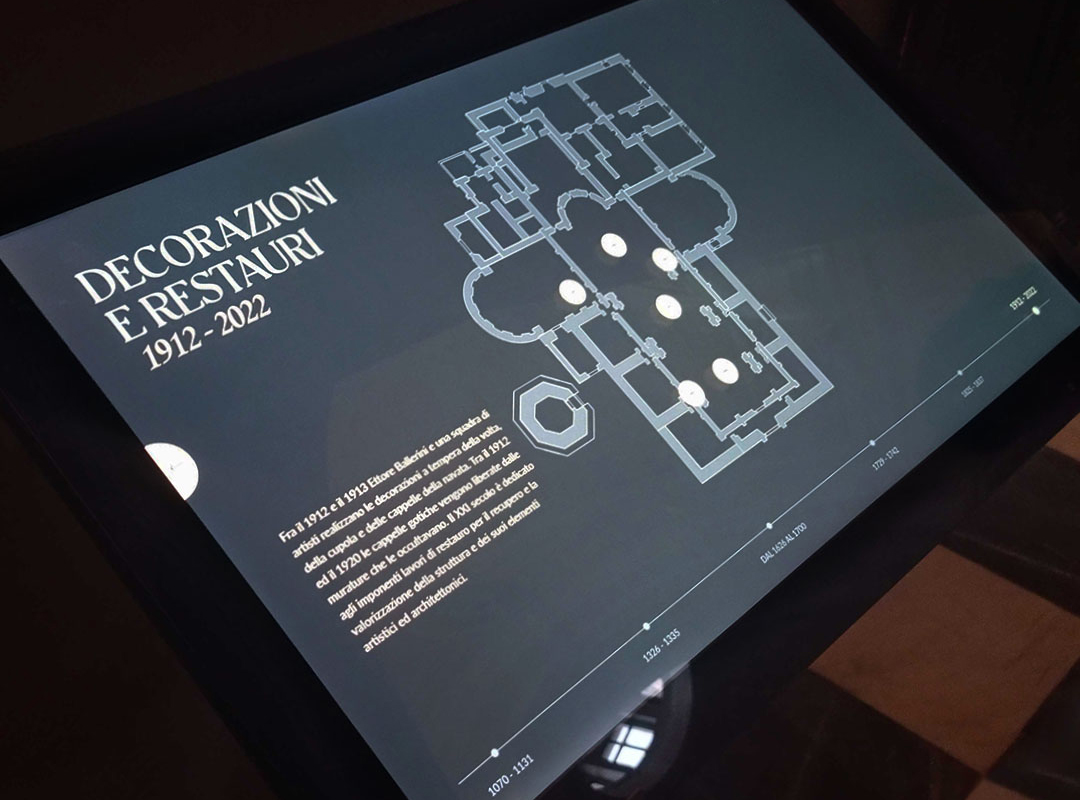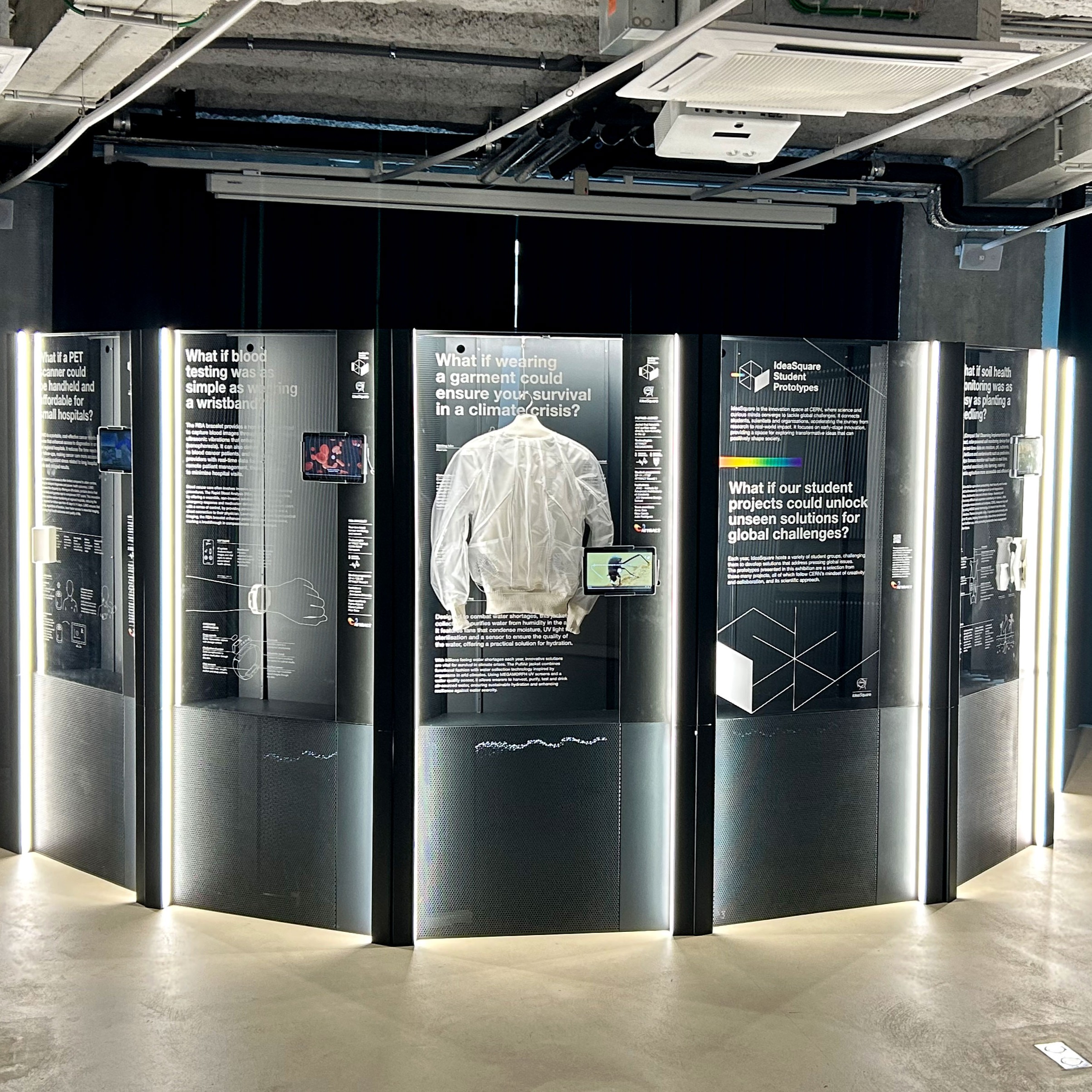Exhibition project “Joan Miró. È quando sogno che vedo chiaro”
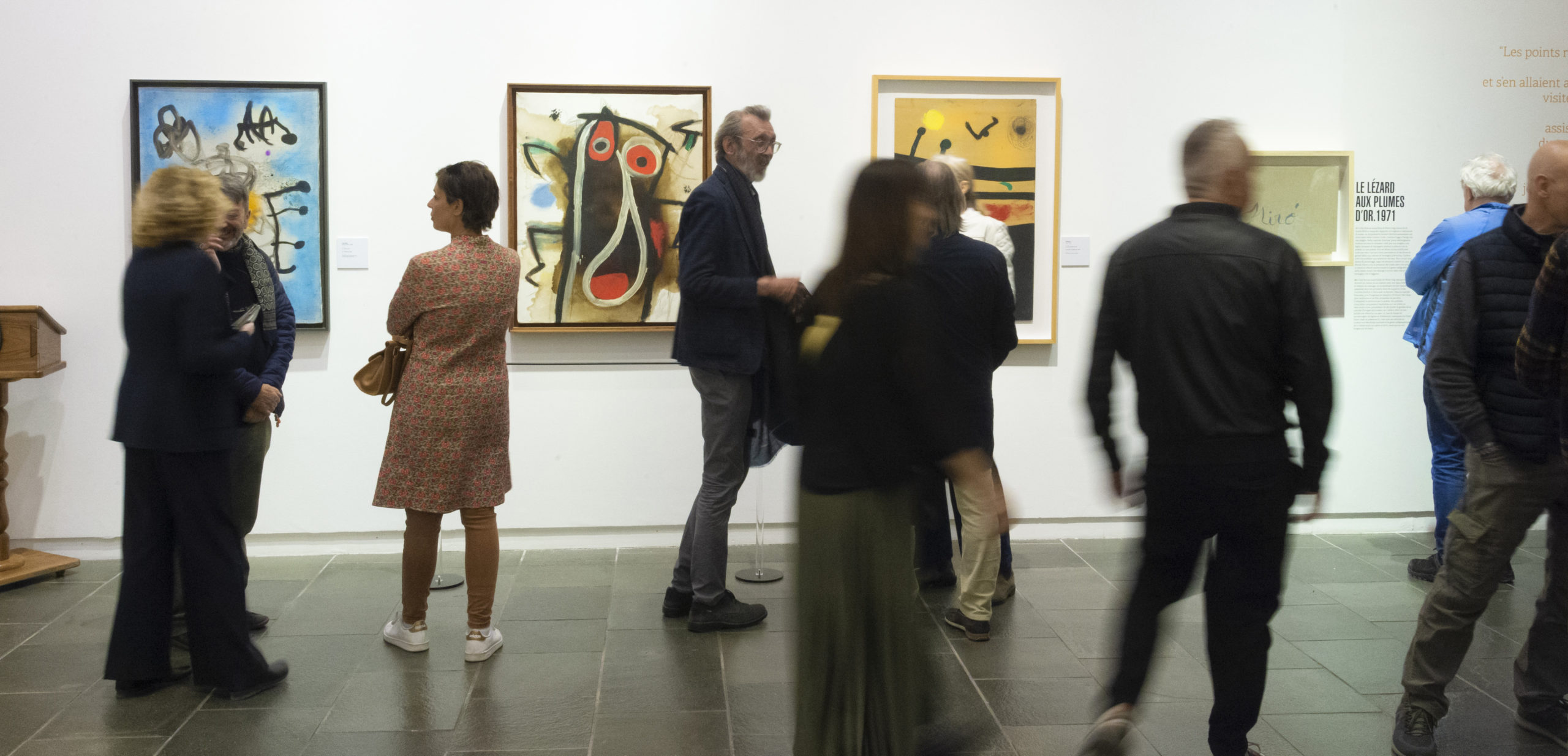
Visivalab has promoted and organized an unprecedented exhibition about Joan Miró, with the aim of shedding a new light onto his universally known work and figure. Under the title Joan Miró. È quando sogno che vedo chiaro, the exhibition offers a reinterpretation of his artwork from an ecological perspective, highlighting the absolute relevance of Miro’s great themes in the age of the climate crisis, the new forms of authoritarianism and the newcomer artificial intelligence.
Valle d’Aosta has sponsored this project due to their unique relationship with the artist, to whom they had already dedicated two exhibitions in the past. For this occasion, the Italian region has granted us the use of the recently renovated space of the Museo Archeologico Regionale. The exhibition, which opened on April 28th and will remain open until October 1st, is framed within the commemoration of the artist’s 130th birth anniversary and the 40th anniversary of his death. The project has become a reality thanks to the sponsorship/funding of the valley, and also the support of Josep Massot (Miró’s biographer) in the expert committee, the curation of Josep Maria Camps, and the direction of Paula Seré (co-founder of Visivalab).
CLIENT Regione Autonoma Valle d’Aosta
YEAR 2023
FEATURES
- Exhibition project and setup
- Coordination of the work team and scientific committee
- Elaboration of the curation concept and storytelling
- Management of the artwork’s transportation and insurance
- Digital installation with monitors 4K
- Projections and videostations with touch screens
- Printing a replica of an ephemeral artwork
- Content creation: interviewing of different witnesses and experts
- Graphic design and visual identity
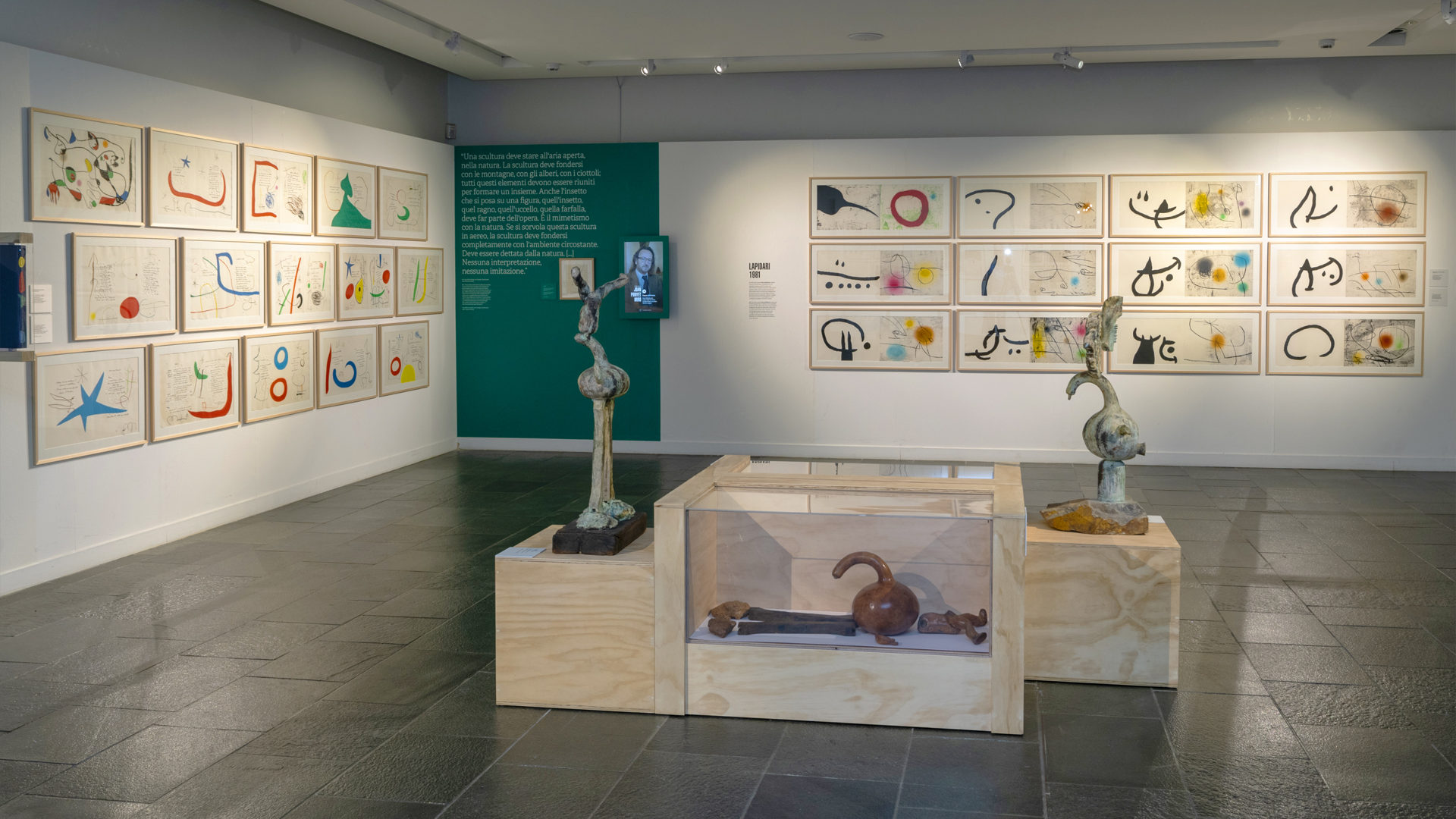
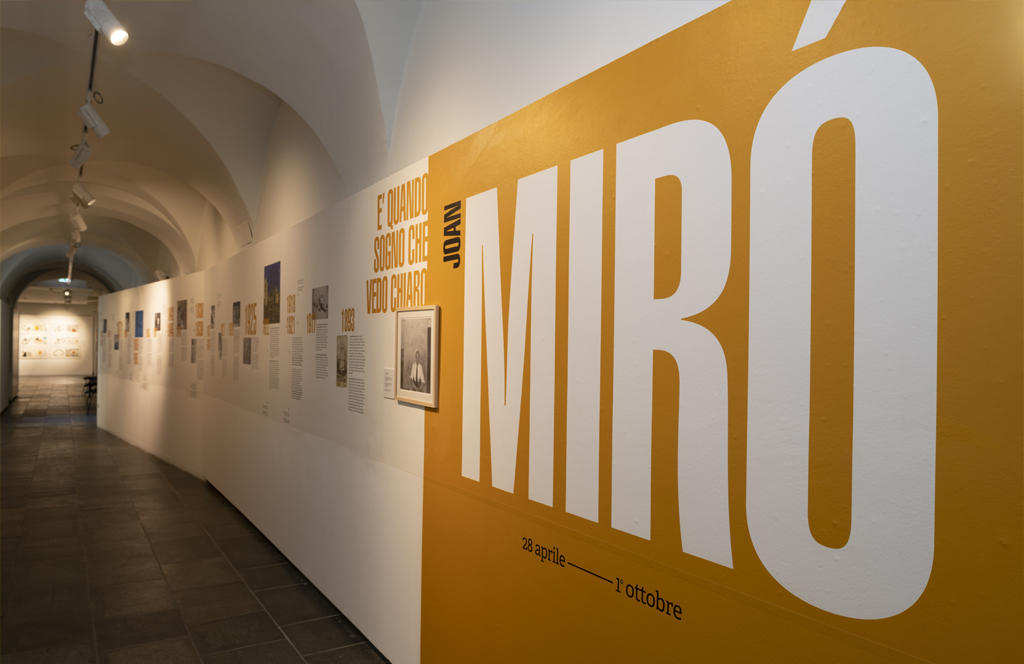
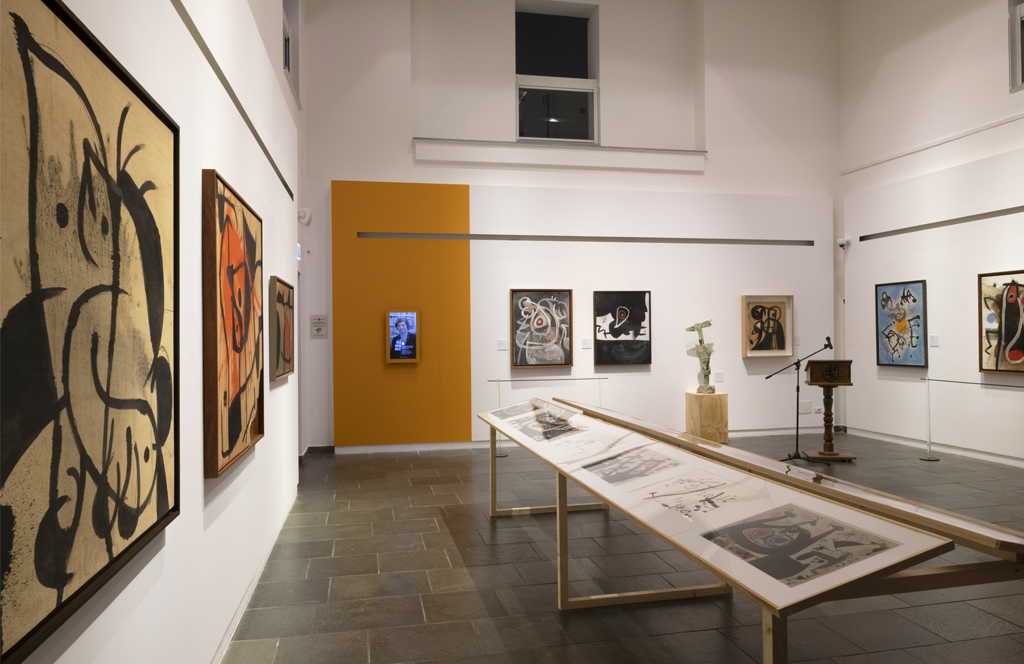
© Stefano Venturini
Project
The universal recognition/acknowledgment of the artist posed a significant challenge when it came to developing an unprecedented exhibition. Nevertheless, this exhibition successfully provides a new perspective, focused on the ecological dimension of Miró’s art. As a visionary ahead of his time, he understood the importance of recovering the long-lost connection with nature and salvaging it for the sake of human survival.
At Visivalab, we have undertaken complete responsibility for the entire exhibition process in an extraordinary effort in close collaboration with all the professionals involved. This range includes curators, academics, artistic institutions, foundations, testimonials and technicians. Simultaneously, we have worked on the planning and conceptualization of the showcase, on the coordination of the artwork loan campaign, as well as on the storytelling, the itinerary and graphic design, the production and the setup.
Since the project’s beginning, we have participated in shaping the work team and the scientific committee for the exhibit, with whom we have closely collaborated in the curation concept, the selection of the artworks and the loan request to their respective owners. Among the management tasks, we handled the communication with the loaning entities and coordinated the transportation specialists for the safe and timely transfer of the artworks, as well as the insurance arrangements.
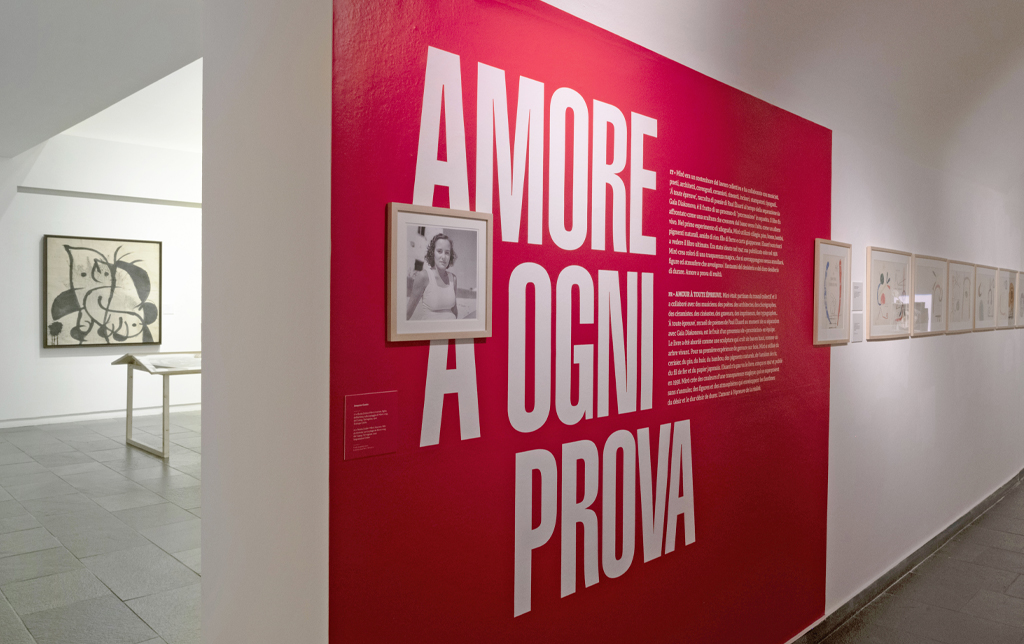
© Stefano Venturini
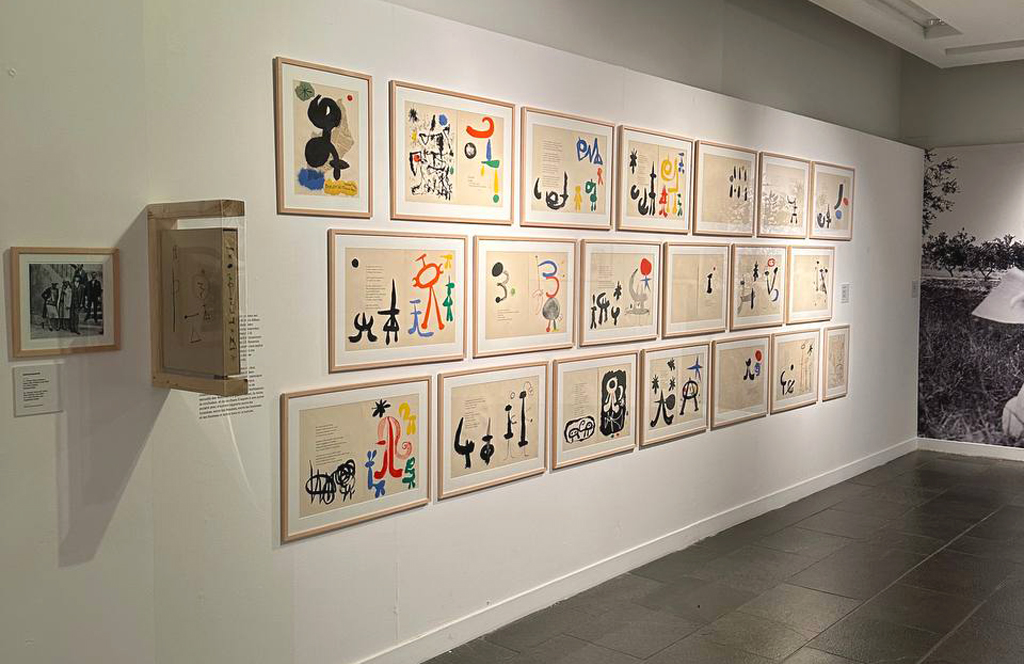
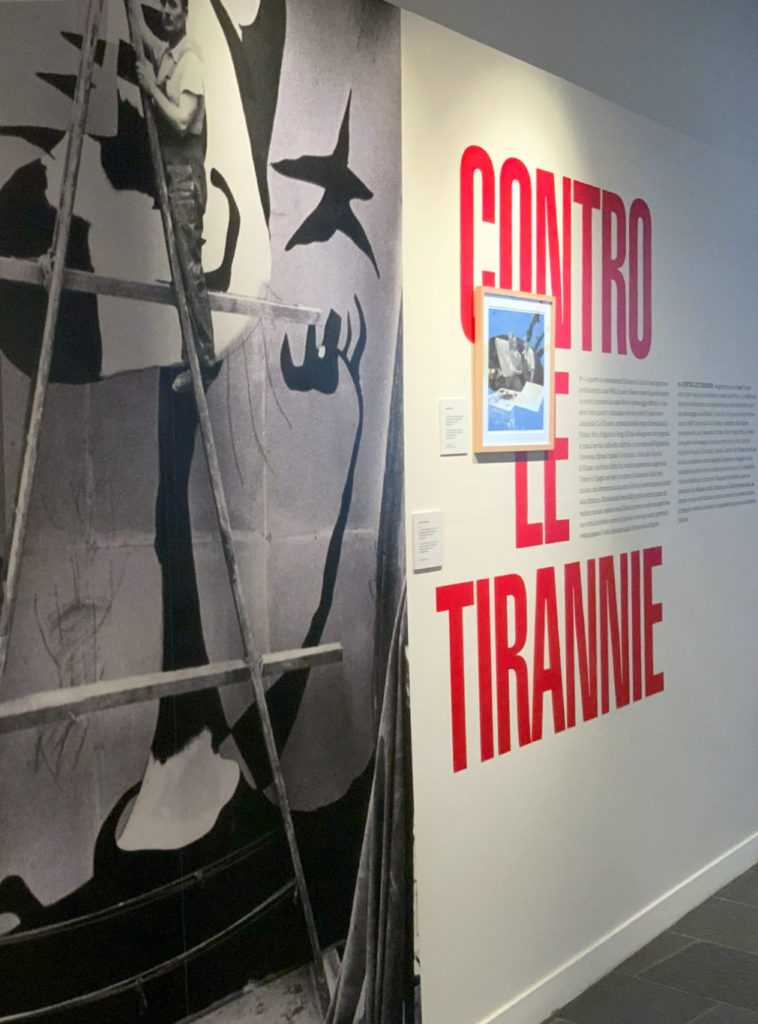
ITINERARY DESIGN
The collection of original pieces showcased, includes 13 oil paintings, 125 engravings from 13 Artists’ books, graphic posters, sculptures and puppets, which testify to Miró’s interdisciplinarity and versatile artistic language.
We based the itinerary design on the idea of combining the masterpieces’ diversity of languages and formats alongside other graphic materials that contextualize his oeuvre and persona, such as photographs and films about the artist. In doing so, we pair his subjective vision —represented by the paintings, sculptures and books— with the external gaze of the photographers and filmmakers with whom he worked throughout his life, who documented his artistic trajectory and day-to-day creative process.
Aiming to obtain an even more intimate portrait of Miró, our team has interviewed four people who had worked side by side or lived with him: his grandson Joan Punyet, the photographer Colita, theater director and puppeteer Joan Baixas and Rosa Maria Malet, the former director of Fundació Joan Miró. The interviews are available in several languages and help us understand the artist’s character and idiosyncrasy from a first-hand point of view.
Furthermore, we at Visivalab have designed and produced EsploraMiró, a gamification app that offers an engaging and playful itinerary that will accompany the exhibition while it’s open. Through mini-games and riddles, it actively involves the audience and allows them to interact with the fascinating realm of Joan Miró.
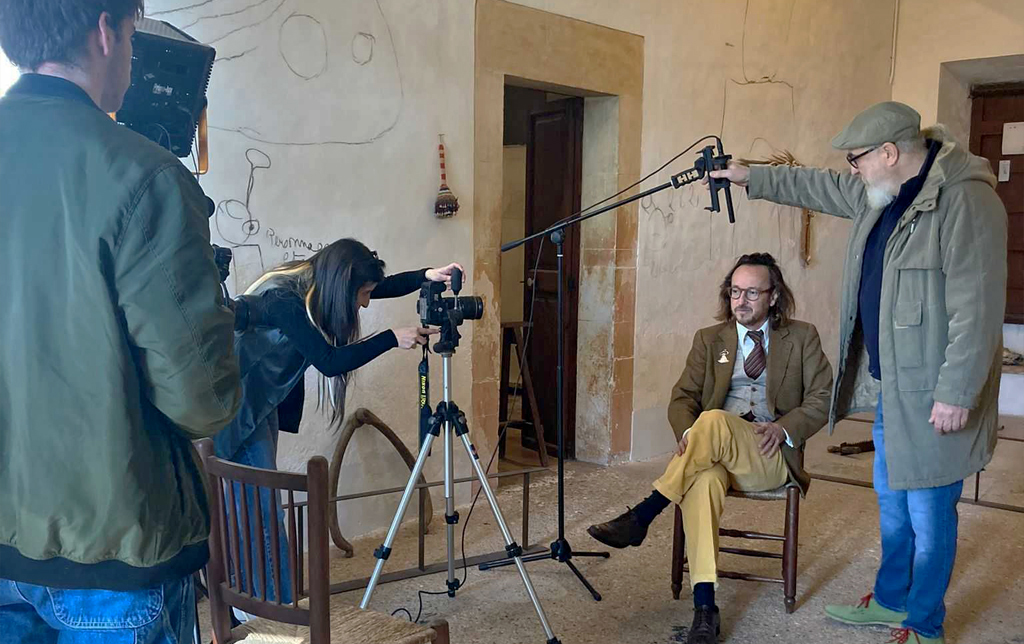
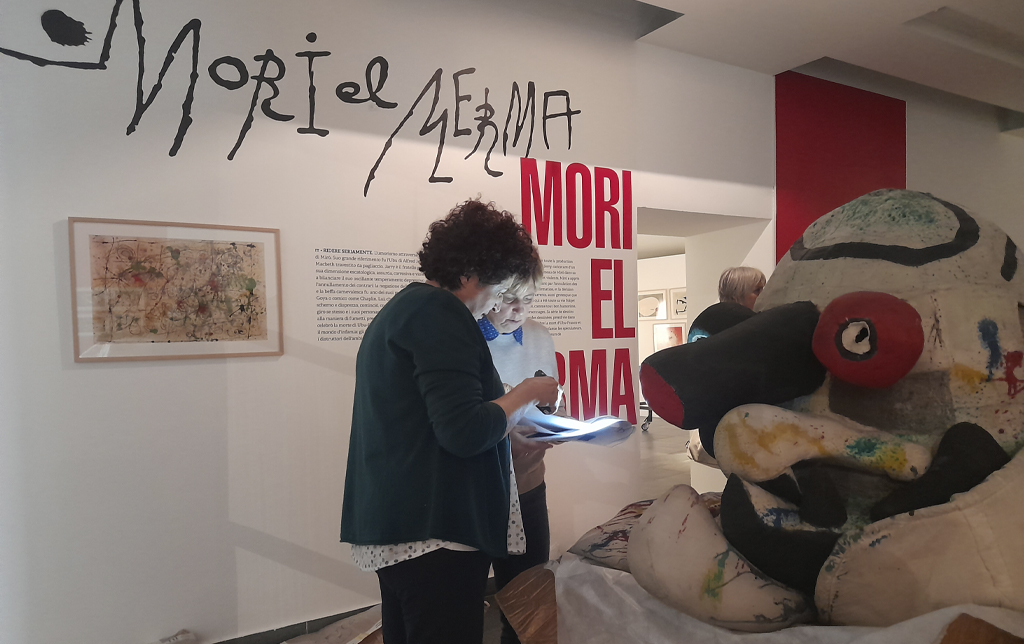
DEVELOPING A BESPOKE LANGUAGE
Faced with contents and works of such different natures, we were compelled to find the language that best suited each. This translates into a range of mediums: projections for the films d’auteur, large format photographs, touch-screen monitors for viewing the interviews and an infographic chronology that serves as an introduction to the showcase.
With this in mind, we have endeavored to present some of the artworks as they had never been seen before, for instance, the Barcelona Series (1944), of which only five sets and two author tests exist. In order to include it in the showcase, we designed a digital installation with four 4K screens that displays the artwork in a new manner, allowing the public to appraise the details of each lithography on its own, as well as the series on its whole.
Another remarkable example is the reproduction of the artist’s intervention on the windows of the Col·legi d’Arquitectes of Barcelona during the exhibition Miró, otro (1969), which himself destroyed as part of the artistic action. Studying existing documentation, we have accomplished to create an accurate replica of a fragment of the artwork, printed on a real-life scale on a methacrylate surface —that reminds us of the original material. As a result, the public will be able to experience an ephemeral artwork that no longer exists, that otherwise, we would only know thanks to the pictures taken on that day and Portabella’s documentary, which are also displayed in the same room.
TECHNICAL INFORMATION
SOFTWARE
- VueJS
- JavaScript
- HTML
- CSS
- MadMapper
HARDWARE
- 4K Screens
- Projectors
- 27″ Touch screens
- Raspberry Pi
- Garagecube Minimad
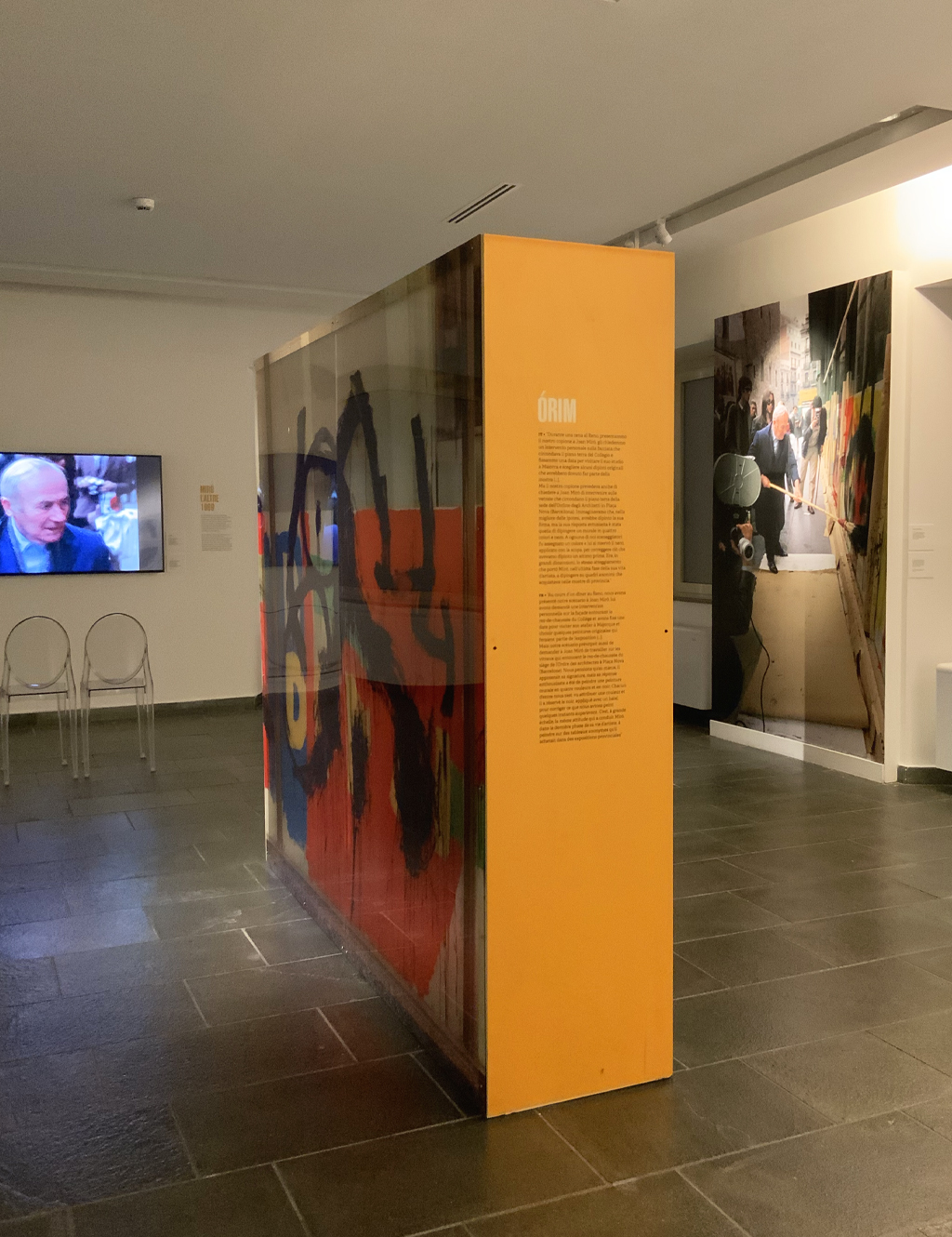
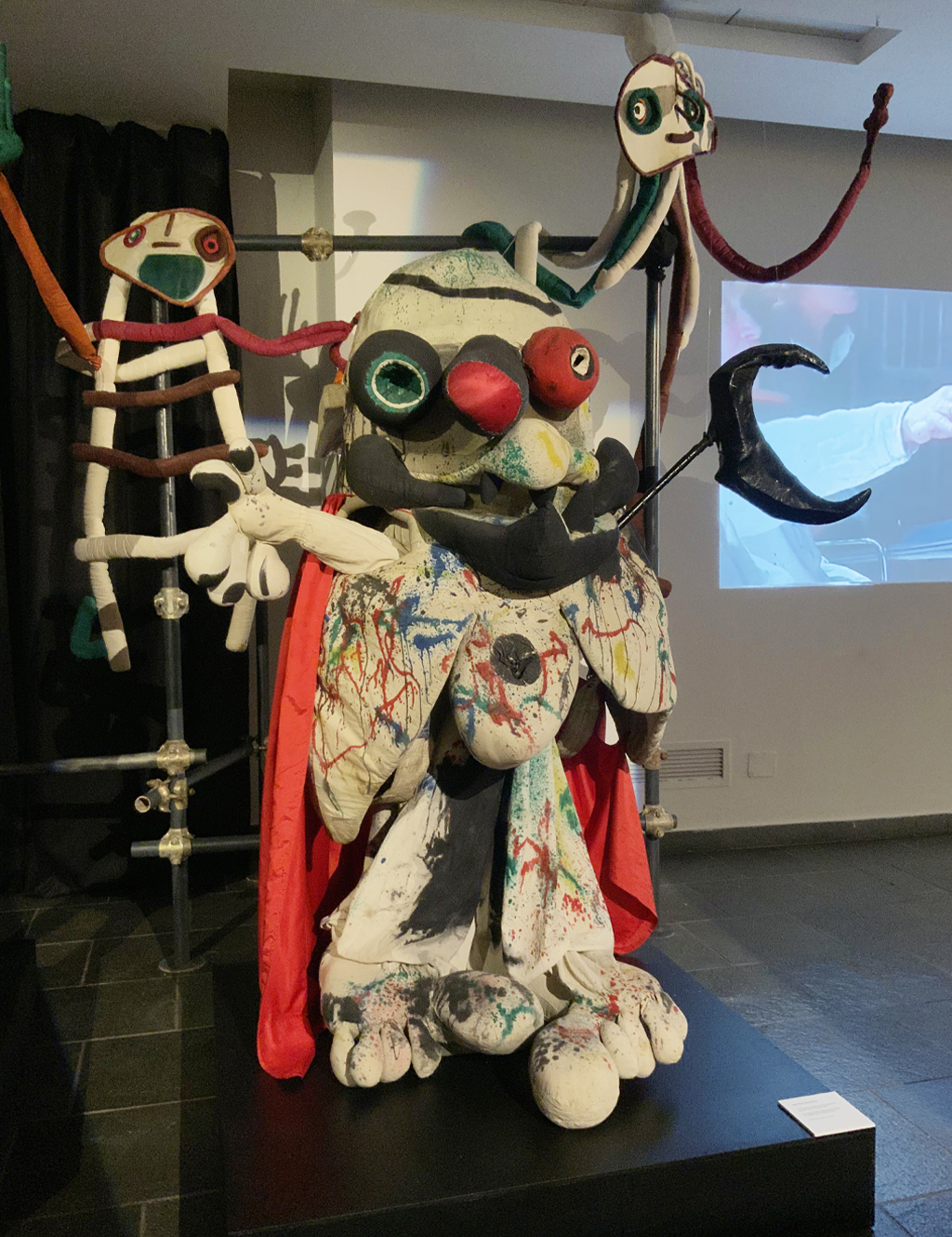
EQUIPMENT AND GRAPHIC IDENTITY
In addition, Visivalab has been responsible for adapting the museum’s lighting and building the exhibition furniture, intending to highlight the details of the artworks taking into account their conservation needs. Among these elements are the wooden platform for the grotesque puppets from the play Mori el Merma (1978) and the plinths and showcases that house the bronze sculptures and the “preparatory objects.” To display the original cases of the Artists’ books, we used transparent urns that stick out from the walls, thanks to which we can appreciate the materiality of these delicate artifacts from all angles without putting them at risk.
As the public wanders through the exhibition, they discover the different facets of the prolific artist. From the most intimate human experience to the social dimension and activism of his work, Miró’s artistic production is full of contrasts.
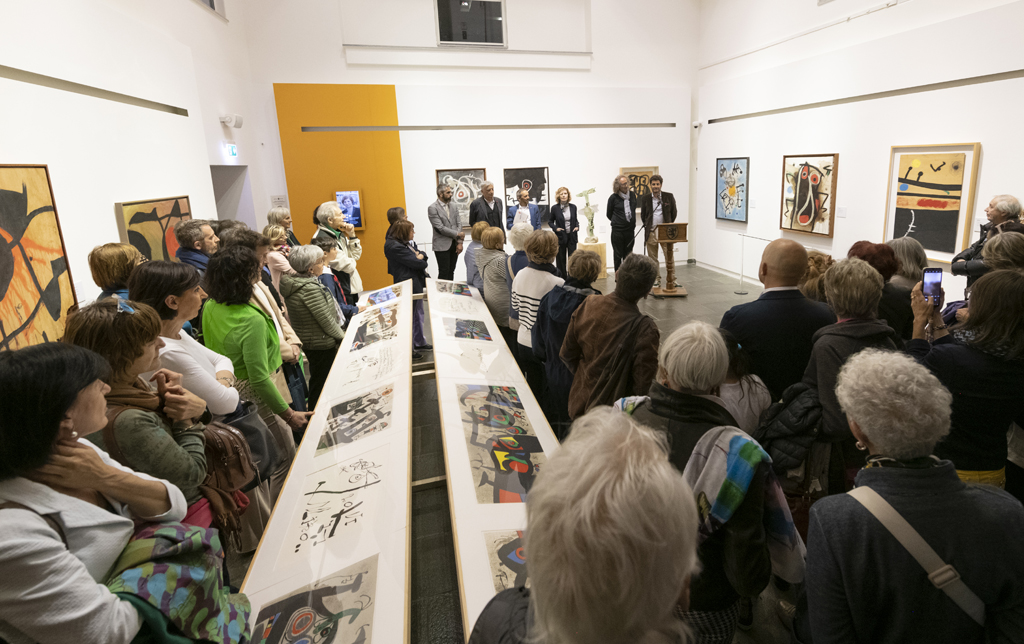
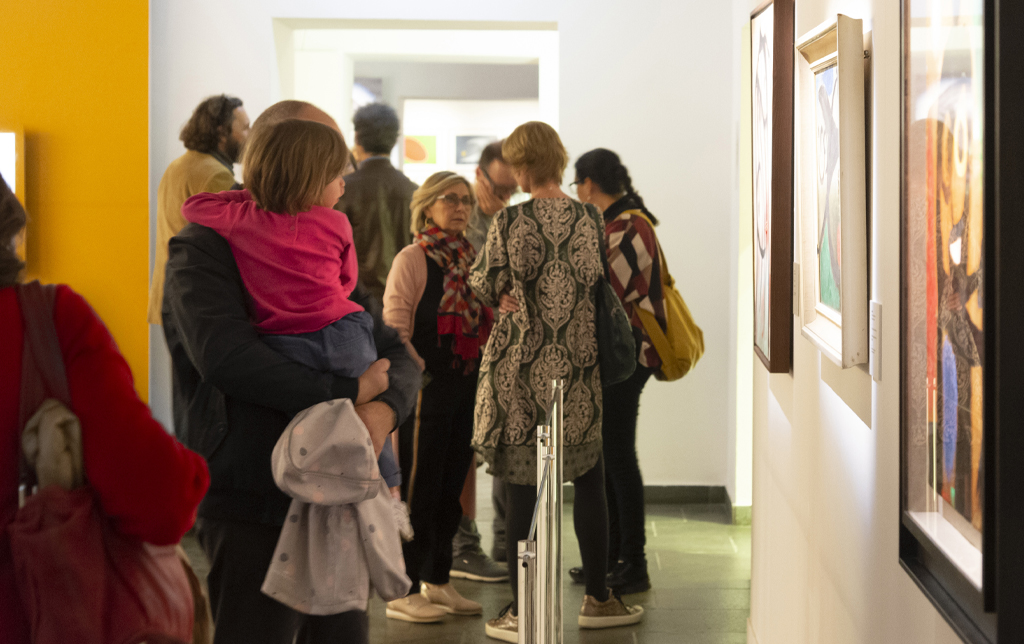
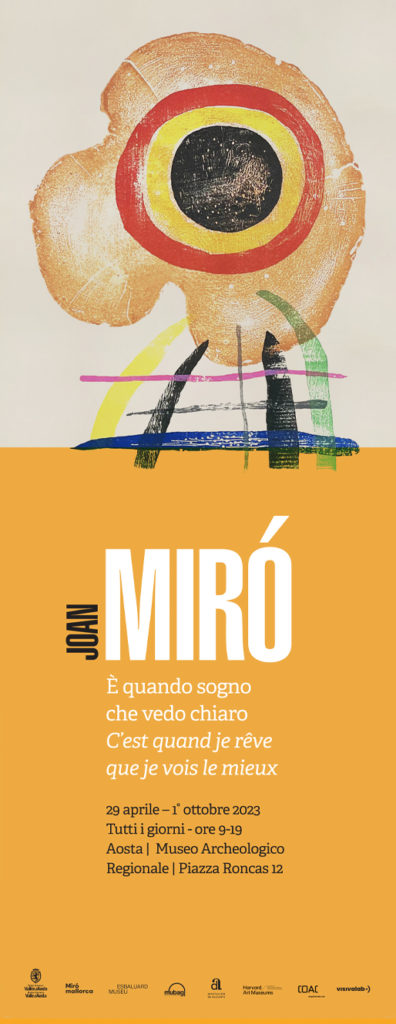
In designing the graphic identity for the exhibition, we have aimed to translate these contrasts to the scenography itself. The use of bold typefaces and the mironian palette help articulate the fragmented spaces of the museum. The typography impact, the literal quotes from poems or thoughts, and the vibrant color walls intertwine with the masterpieces, creating a dynamic visual dialogue that structures the viewer’s glance in three levels: an overall vision of the space, a medium-distance perspective, and a close-up view that allows for more detailed reading and appreciation of the artwork.
This design has been adapted to the various communication and promotion mediums, such as the exhibit catalog, the flyers, the inauguration invite, the banners for the museum and the social media posts.
The chosen image representing the exhibition is a character from the Artist’s book À toute épreuve (1958), which contains the representative mironian color palette and synthesizes two fundamental pillars of his artistic production. On one hand, this being of universal and indeterminate shape, like all Miró’s characters, enables any observer to feel identified with it. On the other hand, it manifests the artist’s bond with nature through the visible growth rings from the trees and the veins of the Woodcut technique used to print this piece.
ACKNOWLEDGMENTS
The exhibition would not have been possible without the collaboration of the following institutions and foundations, who lend us their artworks and materials:
- Archivo Colita Fotografia
- Archivo Fotográfico Pau Barceló
- Arxiu Històric del Col·legi d’Arquitectes de Catalunya – Fondo Fotográfico F. Català-Roca
- Biblioteca Privata, Mantova
- Centro Documental de la Memoria Histórica de Salamanca
- Ernst Scheidegger Archive
- Es Baluard Museu d’Art Contemporani de Palma
- Fundació Pilar i Joan Miró a Mallorca
- Fundació Joan Miró Barcelona – Fondo Joaquim Gomis
- Harvard Art Museums
- Harvard Film Archive
- Institut del Teatre. MAE- Centre de Documentació i Museu de les Arts Escèniques. Cataluña
- Museo de Bellas Artes de Alicante
- Pere Portabella – Films 59
PRESS
Joan Miró in mostra ad Aosta
Livemuseum.it
Nueva exposición de Joan Miró en Aosta, Italia
Fundació Miró Mallorca
“È quando sogno che vedo chiaro”. Il Museo archeologico si colora nel segno di Joan Miró
AostaSera.it

